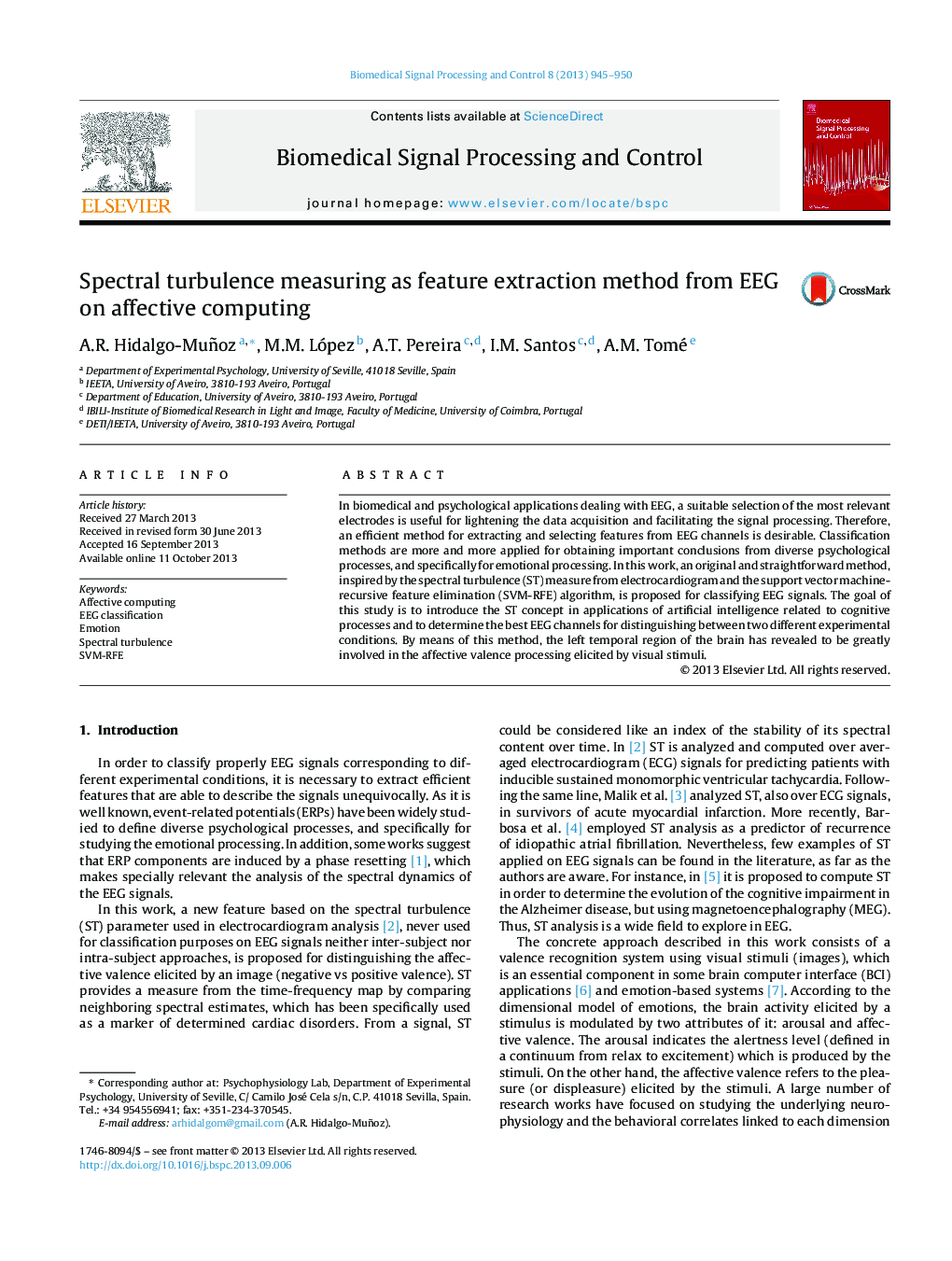| Article ID | Journal | Published Year | Pages | File Type |
|---|---|---|---|---|
| 10368458 | Biomedical Signal Processing and Control | 2013 | 6 Pages |
Abstract
In biomedical and psychological applications dealing with EEG, a suitable selection of the most relevant electrodes is useful for lightening the data acquisition and facilitating the signal processing. Therefore, an efficient method for extracting and selecting features from EEG channels is desirable. Classification methods are more and more applied for obtaining important conclusions from diverse psychological processes, and specifically for emotional processing. In this work, an original and straightforward method, inspired by the spectral turbulence (ST) measure from electrocardiogram and the support vector machine-recursive feature elimination (SVM-RFE) algorithm, is proposed for classifying EEG signals. The goal of this study is to introduce the ST concept in applications of artificial intelligence related to cognitive processes and to determine the best EEG channels for distinguishing between two different experimental conditions. By means of this method, the left temporal region of the brain has revealed to be greatly involved in the affective valence processing elicited by visual stimuli.
Related Topics
Physical Sciences and Engineering
Computer Science
Signal Processing
Authors
A.R. Hidalgo-Muñoz, M.M. López, A.T. Pereira, I.M. Santos, A.M. Tomé,
